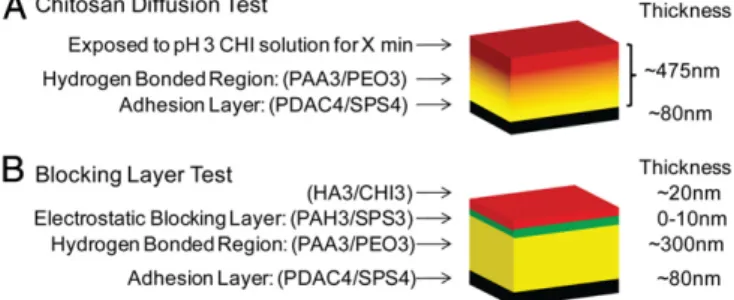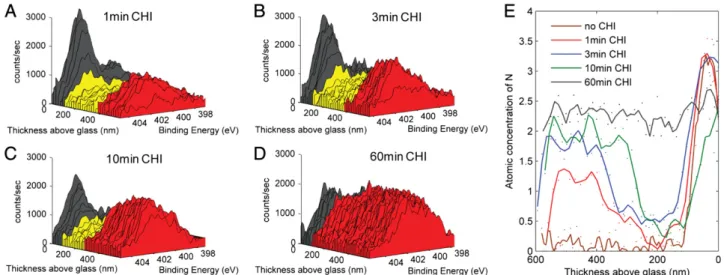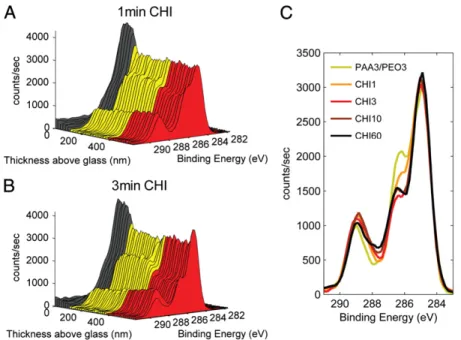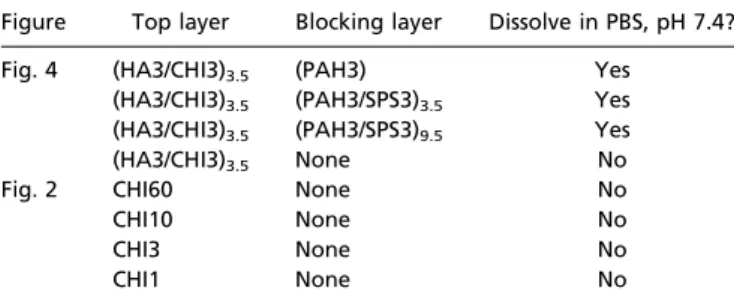Depth-profiling X-ray photoelectron spectroscopy (XPS) analysis of interlayer diffusion in polyelectrolyte multilayers
Texte intégral
Figure




Documents relatifs
We also developed a simple theory of the exponential growth for polyelectrolyte multilayers obtained with a layer-by-layer (LbL) technique. region II in Fig. Otherwise,
Abstract — Quantitative Surface Analysis by XPS (X-Ray Photoelectron Spectroscopy): Application to Hydrotreating Catalysts — XPS is an ideal technique to provide the
of gel thickness, not very different of that obtained with the coagulant concentration 1M. The difference between the NaOH fluxes on the two hydrogel extremities appears due to the
The S2 edge inflection exihibits a shift to higher energy by about 1 eV and occurs at -6552.5 eV which is between that observed for Mn(III) and Mn(1V).. The lower K-edge
The pyramid and the conical structures also improves on the extraction angle, but the intensity, in this specific direction, is way less effective than the firefly structure....
The text of the message displayed above also illustrates two other features of the Conversation Map system as a Usenet newsgroup browser: (1) Since
As metal segregation and chemical equilibration with silicates (solid or liquid) occur at relatively low pressure in planetesimals (size between 3 – 100 km [Chabot and Haack, 2006])
Intercomparison of aerosol optical properties retrieved using the POLDER/PARASOL component (MG mixing model) approach and the corresponding operational AERONET products from